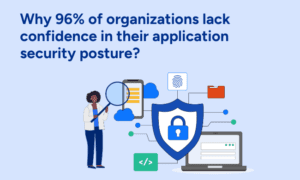Every parent’s worst nightmare used to be playground bullying, but today’s reality is far more complex. The digital age has transformed how young people interact, creating new challenges that follow them home through their screens.
Cyberbullying has become a pervasive issue that doesn’t end when the school bell rings—it’s a 24/7 threat that can deeply impact a teenager’s mental well-being. According to recent research, 30% of American children and teenagers view mental health as their biggest problem, highlighting just how serious this crisis has become.
Unlike traditional bullying, online harassment can happen anywhere, anytime, leaving teens feeling trapped and helpless. The constant connectivity that defines modern adolescence means there’s often no escape from the torment, making the link between digital harassment and teen depression more concerning than ever before.
Residential Help for Teens Facing Digital Mental Health Struggles
Teens facing mental health challenges from online harassment need more than surface-level support. Residential programs offer structured, in-depth care to help them heal and rebuild.
With its vast network of schools, from urban centers to suburban communities, the county faces unique challenges in addressing teen mental health issues. The area’s tech-savvy population and high social media usage rates among teens create an environment where cyberbullying can flourish unchecked.
When families in this region are struggling with severe cases of teen depression linked to online harassment, comprehensive support becomes crucial. Residential Treatment for Teens in Los Angeles County gives specialized programs designed to address the complex relationship between digital trauma and mental health, providing intensive therapeutic interventions that can help young people recover from the devastating effects of cyberbullying.
Understanding Cyberbullying’s Impact on Teen Mental Health
The digital landscape has fundamentally changed how teenagers experience social interactions and peer relationships. Mental health in teenagers has become increasingly complex as online and offline experiences blend together.
The 24/7 Nature of Digital Harassment
Traditional bullying used to end when kids left school, but cyberbullying follows teens everywhere. Their phones buzz with cruel messages during family dinners, and hateful comments appear on their social media profiles while they’re trying to sleep. This constant exposure creates a state of hypervigilance that’s exhausting and emotionally draining.
The anonymity of online platforms often emboldens bullies to be more vicious than they’d ever be in person. They can hide behind fake accounts, spread rumors instantly to hundreds of people, and create lasting digital evidence of their cruelty that victims can’t escape.
How Digital Spaces Amplify Harm
Social media platforms weren’t designed with teenage psychology in mind, and their features can make bullying more damaging. A single embarrassing post can be screenshot, shared, and reshared indefinitely. Group chats become echo chambers where multiple people pile on one victim, creating an overwhelming sense of isolation.
The public nature of many online interactions means that cyberbullying often has a larger audience than traditional bullying, amplifying the shame and humiliation victims feel. This increased visibility can make recovery more difficult and long-lasting.
The Connection Between Cyberbullying and Teen Depression
Research consistently shows a strong link between online harassment and depressive symptoms in adolescents. Understanding this connection is crucial for parents, educators, and mental health professionals working to support affected teens.
Psychological Mechanisms at Work
When teens experience cyberbullying, their brains respond as if they’re under physical threat. Over time, this chronic stress can rewire the brain in ways that make depression more likely.
The developing teenage brain is particularly vulnerable to these effects. The prefrontal cortex, which helps regulate emotions and make decisions, isn’t fully mature until the mid-twenties. This means teens have less natural resilience against the psychological impact of sustained harassment.
Social Isolation and Its Consequences
Cyberbullying often leads to social withdrawal as victims try to protect themselves from further harm. They might avoid social media, skip school activities, or pull away from friends who they fear might turn against them. This isolation can create a downward spiral where teens lose the social support they need to cope with their experiences.
The shame associated with being bullied can make teens reluctant to seek help, leaving them to struggle alone with their pain. This secrecy often allows teen depression to worsen before adults even realize there’s a problem.
Long-term Mental Health Implications
The effects of cyberbullying can persist long after the harassment ends. Studies show that teens who experience online bullying are more likely to develop anxiety disorders, have difficulty trusting others, and struggle with self-esteem issues well into adulthood.
Some victims develop symptoms similar to post-traumatic stress disorder, including flashbacks, nightmares, and severe anxiety when using digital devices.
Recognizing the Effects of Cyberbullying
Identifying the signs of cyberbullying and its impact on teen mental health can be challenging, as many symptoms overlap with normal teenage behavior. However, certain patterns can help parents and educators recognize when a teen might be struggling.
Behavioral Changes to Watch For
Teens experiencing cyberbullying might suddenly become secretive about their online activities, quickly closing screens when adults approach, or seeming anxious when receiving texts or notifications. They might also show reluctance to go to school, attend social events, or participate in activities they previously enjoyed.
Changes in sleep patterns are common, with some teens staying up late to avoid their thoughts or sleeping excessively to escape their reality.
Emotional and Physical Symptoms
The effects of cyberbullying can manifest in both emotional and physical ways. Teens might experience frequent headaches, stomach aches, or other unexplained physical complaints. They might seem more irritable, sad, or anxious than usual, with mood swings that seem disproportionate to the situation.
Some teens become hypersensitive to criticism or rejection, interpreting neutral comments as attacks. Others might develop a nihilistic worldview, expressing hopelessness about the future or feeling like nothing will ever get better.
Academic and Social Impacts
Cyberbullying can significantly impact a teenager’s ability to focus on schoolwork and maintain healthy relationships. Grades might drop suddenly, and teens might avoid group projects or presentations where they feel exposed and vulnerable.
Social relationships often suffer as teens withdraw from friends and family members. They might stop participating in extracurricular activities, avoid social gatherings, or seem uncomfortable in group settings where they once thrived.
Strategies for Preventing Cyberbullying
Preventing cyberbullying requires a multi-faceted approach involving parents, schools, and communities working together. Effective prevention strategies focus on creating positive online cultures and teaching digital citizenship skills.
Building Digital Literacy and Empathy
Education plays a crucial role in prevention. Teaching teens about digital citizenship, online etiquette, and the real-world consequences of their online actions can help create more compassionate digital communities. Role-playing exercises and discussions about empathy can help teens understand how their words affect others.
Schools can implement comprehensive programs that address both the technical aspects of online safety and the emotional intelligence needed to navigate digital relationships. These programs work best when they’re ongoing rather than one-time presentations.
Creating Supportive School Environments
Effective preventing cyberbullying strategies require clear policies and consistent enforcement. Schools need to establish clear consequences for online harassment and create safe reporting mechanisms that protect victims from retaliation.
Anti-bullying programs that address both traditional and cyberbullying can help create school cultures where harassment isn’t tolerated. Peer mediation programs and restorative justice approaches can help address conflicts before they escalate.
Supporting Mental Health in Teenagers
Addressing the mental health impacts of cyberbullying requires comprehensive support systems that address both immediate symptoms and long-term recovery. Mental health in teenagers must be treated as a priority, not an afterthought.
Professional Treatment Options
When cyberbullying leads to significant mental health issues, professional intervention becomes necessary. Therapists who specialize in adolescent development and digital trauma can help teens process their experiences and develop coping strategies.
Cognitive-behavioral therapy has shown particular promise in helping teens reframe negative thought patterns and develop resilience. Group therapy can also be beneficial, allowing teens to connect with others who’ve had similar experiences.
Family and Community Support
Families play a crucial role in supporting teens recovering from cyberbullying. Open communication, without judgment or blame, can help teens feel safe sharing their experiences. Parents need to resist the urge to immediately solve the problem and instead focus on listening and validating their teen’s feelings.
Community programs that bring teens together for positive activities can help rebuild social connections and confidence. Mentorship programs, volunteer opportunities, and creative outlets can provide healing spaces where teens can rediscover their strengths.
| Traditional Bullying | Cyberbullying |
| Limited to school hours | 24/7 harassment possible |
| Witnessed by small groups | Can reach unlimited audiences |
| Evidence often unavailable | Digital evidence preserved |
| Face-to-face confrontation | Anonymous attacks common |
| Physical escape possible | Follows victims everywhere |
| Limited spreading of rumors | Viral sharing of content |
FAQs
How does cyberbullying lead to depression?
Cyberbullying perpetrators rarely encounter victims face-to-face, so they don’t grasp their actions’ full impact. This harassment causes teens to suffer heartache, shame, humiliation, and marginalization, leading to depressive symptoms.
How does cyberbullying affect adolescent mental health and wellbeing?
Victims experience various emotional responses including suicidal thoughts, lowered self-esteem, anger, frustration, and depression. They often feel scared and powerless as a result of being bullied online.
What are the rates of cyberbullying depression?
Studies show higher rates of stress, depression, and anxiety among students involved in cyberbullying. Research indicates 39% dropped out of school, 37% showed delinquent behavior, 32% engaged in substance abuse, and 16% were severely depressed.
Wrapping Up
The relationship between cyberbullying and teen depression is complex, but it’s not insurmountable. With proper awareness, intervention, and support, teens can recover from these experiences and develop the resilience needed to thrive in our digital world.
The key lies in recognizing that this isn’t just a “teenage problem” that kids will outgrow—it’s a serious mental health issue that requires adult intervention and support. By taking cyberbullying seriously and addressing its mental health impacts, we can help create a generation of young people who are better equipped to handle the challenges of digital life.



































